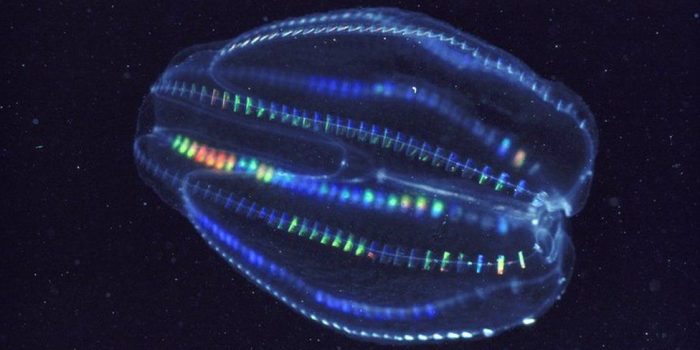Scientists in the United States have made a groundbreaking discovery, identifying the oldest known living organism on Earth.
Extensive research has confirmed that this remarkable creature is a ctenophore, commonly referred to as a comb jelly, which exhibits jellyfish-like characteristics. Unlike the relatively recent appearance of dinosaurs around 230 million years ago, these organisms emerged as early as 700 million years ago, making them a fascinating subject of scientific inquiry.

For years, biologists have been dedicated to unraveling the mysteries surrounding the origins of the first animals. Their investigations have led them to narrow down the possibilities to two primary contenders: sponges and comb jellies. While sponges are stationary, dedicating their adult lives to filtering food from seawater in a fixed location, comb jellies possess the ability to navigate the depths of the world’s oceans in search of sustenance.
A recent study involving researchers from the University of California, Berkeley has shed light on this evolutionary puzzle by revealing that comb jellies predate sponges, with their existence dating back approximately 600 million years. These extraordinary organisms feature eight sets of cilia, tentacle-like structures that line their sides, enabling them to propel themselves through the oceanic depths in pursuit of nourishment.

Daniel Rokhsar, a researcher from the University of California, Berkeley, explained that comb jellies serve as the “most recent common ancestor of all animals” and likely thrived 600 to 700 million years ago. Due to their soft-bodied nature, these ancient creatures did not leave behind a direct fossil record, making it challenging to ascertain their precise characteristics.

Nonetheless, by studying and comparing present-day animals, scientists can gain valuable insights into our shared ancestry.
Darrin Schultz, a collaborator from the University of Vienna, emphasized that this significant discovery will undoubtedly contribute to the advancement of our understanding of animal evolution. By studying the comb jellies, scientists can begin to unravel the complex tapestry of how lifeforms have evolved throughout history.
This remarkable finding of the oldest living organism not only solidifies comb jellies’ position as the closest relatives to the first animals but also propels our understanding of the intricate web of life’s evolution.


